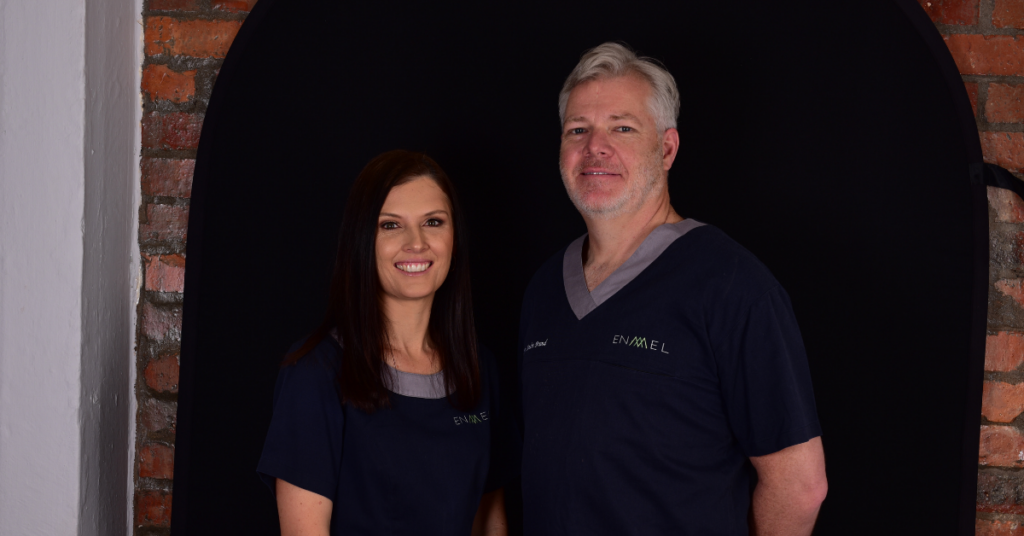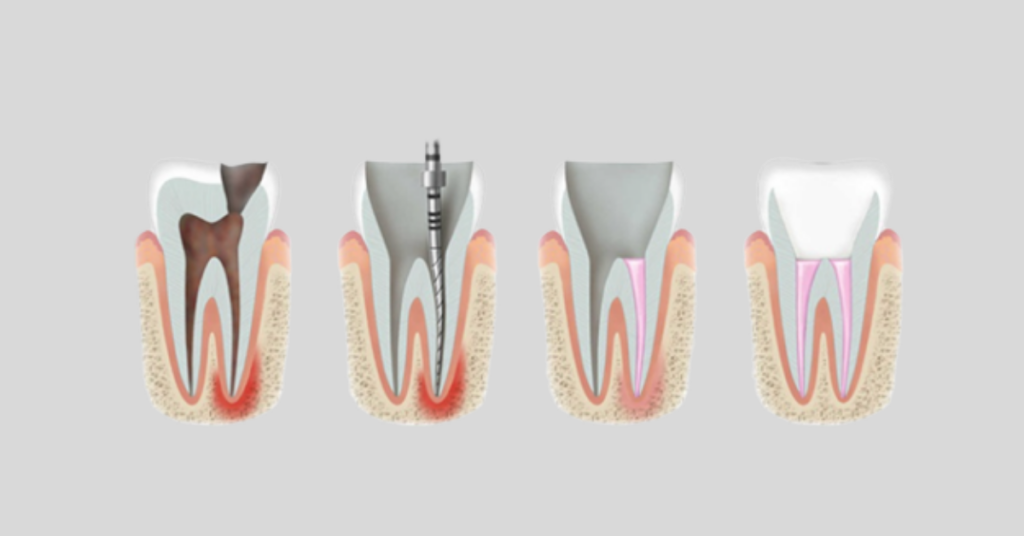At Enamel Dentistry, you can expect a team of experienced endodontists to offer you advanced root canal treatments.

First consultation appointment: CBCT scan & diagnosis
Firstly, we will use a dental CBCT (cone beam computed tomography) scan that produces a three-dimensional (3-D) image of your teeth, soft tissue, nerve pathways, and bone in a single scan. We use these images during the diagnostics and treatment phase.
Furthermore, we will assess your CBCT scan that will enable us to provide treatment options for the problematic tooth. Thereafter, we’ll provide a cost estimate with the suggested treatment duration. Moreover, we’ll schedule an appointment to initiate the treatment.

Treatment
Preparation and safety
Once you’ve decided to proceed with the treatment, you’ll visit us for a second appointment to start with the root canal treatment.
Firstly, our endodontist will numb the tooth using a local anaesthetic instrument called The Wand®. Secondly, the tooth will be isolated using a Rubber dam. This is to ensure that we maintain strict hygiene protocols during treatment. Furthermore, during the root canal treatment, we will provide you with protective glasses to safe guard your eyes from any droplets or materials.
Methodology
Depending on the condition of your tooth, we’ll treat it accordingly:
Severely broken or damaged tooth
Our endodontist will first restore the tooth structure prior to initiating the treatment. If this is the case, it is important to note that this will require more time, and can cause the treatment to stretch over more than one appointment.
Solid structure
If a solid tooth structure is present, we access the canal by making a hole in the area where the canals infiltrate the roots.
Cleaning and preparing the root canal
After allocating all canals, we make use of a dental operating microscope (DOM). We measure the canals using an apex-locator. We will then thoroughly clean out the canal, including the root tips, using thin root treatment files. During this phase, we take special care to ensure that no pulp tissue is left behind in the canals of the roots.
To help with the accuracy during the cleaning process we also make use of laser technology. We use Diode and Er:YAG lasers to disinfect canals.

Filling the root canal
Once we have cleaned and shaped the canals according to a specific filing system’s size and shape, we then dry and fill the area. We dry out the canal using small paper points. Moreover, we fill the canal with a sealer cement and rubber-like filling material called Gutta-percha.

In some cases, teeth with severe infection present will still show signs of puss drainage even after the initial cleaning and shaping process. Most importantly, we will clean and disinfect teeth in a second and/or third appointment until all symptoms in the tooth have cleared up. Our team will most likely fill the canal with an antibiotic paste and close it temporarily until treated.
Scenarios where this is applicable:
- If a tooth has a large lesion around the roots and in the bone
- If you present severe pain symptoms
Once we identify the canals are dry and all symptoms are not present anymore, we seal it off and the tooth can be restored with a permanent filling.
What happens after a root canal?
Once we have completed a root canal treatment, our endodontist will refer the patient to our cosmetic dentistry department for a crown placement.
We will schedule a 6-month followed-up appointment to ensure that healing in and around the tooth has taken place. We take pride in our work, and we ensure that our treatment provided was successful. Moreover, we ensure that good oral health was established during any root canal treatment.

